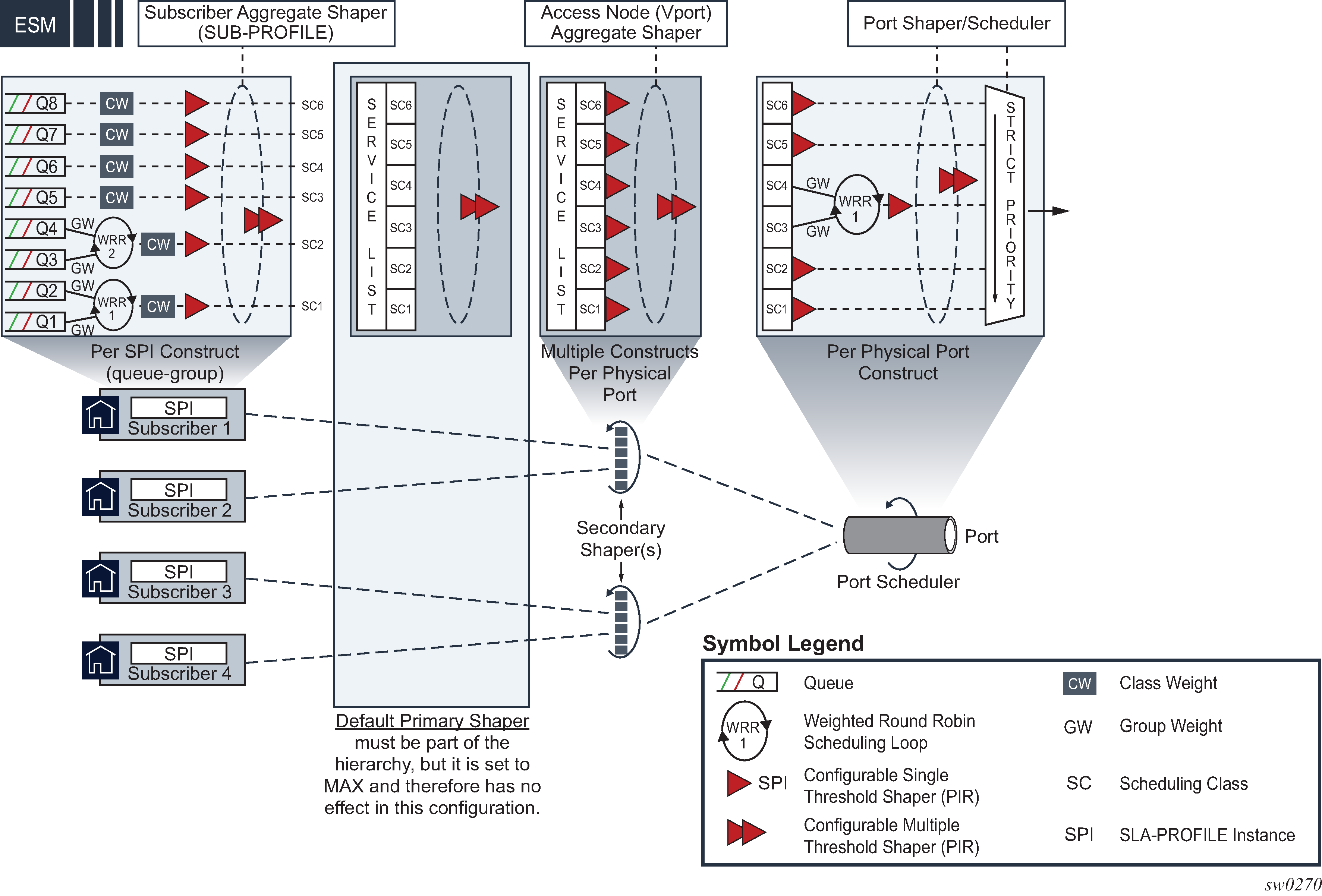An example for single SLA mode is shown in Figure: Single SPI mode. In this mode, only a single SPI can be assigned to the subscriber. On the QoS level, the SPI represents a subscriber with the aggregate rate that is configured in the subscriber profile. In this mode of operation, the aggregate rate in the SLA profile should not be configured. If the aggregate rate is configured, the minimum of the rate configured in the subscriber profile and SLA profile are in effect for the SPI.
In single SLA mode, primary shapers have no functional role. However, because HSQ mandates the presence of the primary shaper in the hierarchy, the queue set under the SPI must be associated with a primary shaper construct. In such case, this enforced and futile primary shaper is implicitly created by the system. The number of primary shapers on an HSQ is finite, and consequently the number of implicitly created primary shapers should be tracked by the operator to ensure that the scaling limit of primary shapers in expanded SLA mode is not violated.
The system automatically creates the following primary shapers:
one default primary shaper per physical port
one managed bypass primary shaper per secondary shaper in single SLA mode
By default, the aggregate shaping rate of implicitly-created primary shapers is set to max which means that no rate limiting is performed at that level.
